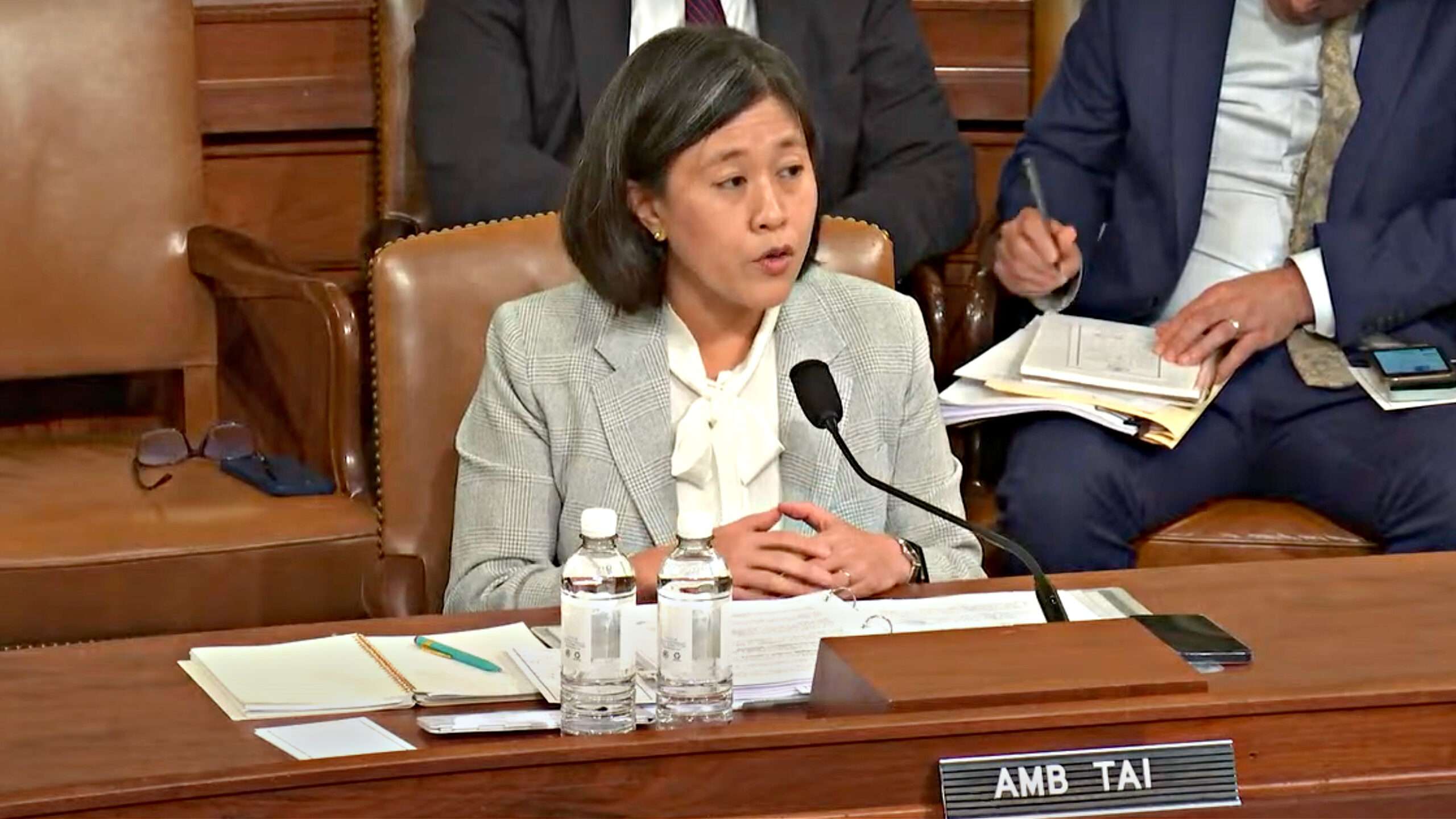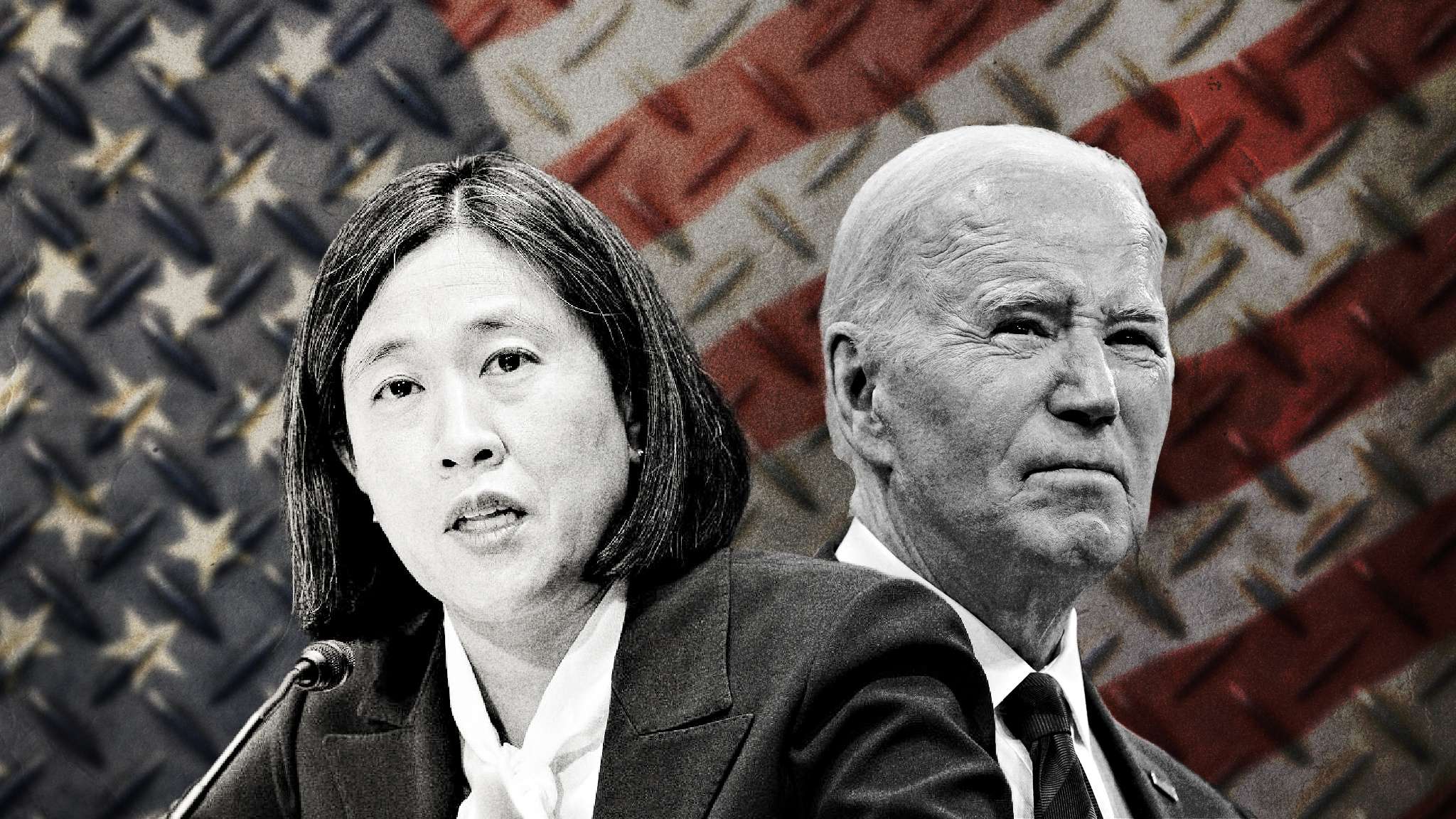
Proponents of “Trade Promotion Authority” aka “Trade Deficit Promotion Authority” have claimed that the 2015 bill has “tough, new” controls for Congress exerting control over the process. The claims are false.
One simply has to read the bill, and read it in context. The analysis of the actual language of the 2015 Fast Track bill, and comparison with the 2002 Fast Track bill, show that there is nothing substantively new. Rather, Congress cedes authority to the executive branch with the illusion of control.
********
Analysis: Bipartisan Congressional Trade Priorities and Accountability Act of 2015
Most of the text of the Fast Track trade authority bill replicates word-for-word the text of the 2014 Fast Track bill, which itself replicated much of the 2002 Fast Track bill.
The bill explicitly grandfathers in Fast Track coverage for the almost-completed Trans-Pacific Partnership (TPP) and would extend Fast Track procedures for three to six years until 2021. The bill would delegate away Congress’ constitutional trade authority, even after the Obama administration dismissed bipartisan and bicameral demands that the TPP include enforceable currency manipulation disciplines.
In the past 21 years, this form of Fast Track authority has only been authorized once by Congress – from 2002 to 2007. In 1998, the House of Representatives voted down Fast Track for President Bill Clinton with 71 GOP members joining 171 House Democrats. Bill Clinton only had Fast Track for two of his eight years in office.
The bill would:
* Empower the executive branch to unilaterally select partner countries for a trade pact, determine an agreement’s contents through the negotiating process, and then sign and enter into an agreement – all before Congress voted to approve a trade pact’s contents, regardless of whether a pact met Congress’ negotiating objectives;
* Authorize the executive branch to write legislation containing any terms the White House decides are “necessary or appropriate” to implement the pact. Such legislation would not be subject to normal congressional committee review and markup, meaning this and future administrations could include in a Fast-Tracked trade bill whatever terms it desired;
* Require votes in both chambers within 90 days, forbidding any amendments and limiting debate to 20 hours, whether or not Congress’ negotiating objectives were met.
* Instead of establishing a new “exit ramp,” the bill literally replicates the same impossible conditions from past Fast Track bills that make the “procedural disapproval” mechanism to remove an agreement from Fast Track unusable. A resolution to do so must be approved by both the Senate Finance and the House Ways and Means committees and then be passed by both chambers within 60 days. (Sec. 6(b)(1-2)) The bill’s only new feature in this respect is a new “consultation and compliance” procedure that would only be usable after an agreement was already signed and entered into, at which point changes to the pact could be made only if all other negotiating parties agreed to reopen negotiations and then agreed to the changes (likely after extracting further concessions from the United States). (Sec. 6(b)(3-4)) That process would require approval by 60 Senators to take a pact off of Fast Track consideration, even though a simple majority “no” vote in the Senate would have the same effect on an agreement. In contrast, the 1988 Fast Track empowered either the House Ways and Means or the Senate Finance committees to vote by simple majority to remove a pact from Fast Track consideration, with no additional floor votes required. And, such a disapproval action was authorized before a president could sign and enter into a trade agreement. (19 USC 2903(c)(2)(B))
Analysis of the Fast Track trade authority bill: Core Provisions Are Identical to 2002 Fast Track
Like the 2014 Hatch-Camp-Baucus Fast Track bill, the 2015 Fast Track trade authority bill replicates the procedures included in the 2002 grant of Fast Track that expired in 2007:
* The president would be empowered to unilaterally select trade negotiating partners and commence negotiations on a pact for which Fast Track procedures would apply. Like the 2002 Fast Track, in the Fast Track trade authority bill this authority is conditioned only on pro forma consultations and 90 calendar days’ notice being given to Congress before negotiations begin. Replicating the 2002 Fast Track, the bill provides no role for Congress in selecting with which countries negotiations subject to Fast Track treatment are initiated. (Sec. 3(d) and 5(a))
* The president would be empowered to unilaterally control the contents of an agreement. As with the 2002 Fast Track, congressional negotiating objectives in the Fast Track trade authority bill are not enforceable. Whether or not U.S. negotiators obtain the listed negotiating objectives, the Fast Track trade authority bill would empower the president to sign and enter into a trade pact before Congress votes on it, with a guarantee that the executive branch could write legislation to implement the pact and obtain House and Senate votes within 90 days, with all amendments forbidden and a maximum of 20 hours of debate permitted. (Sec. 3(b))
* Democratic and GOP presidents alike have historically ignored negotiating objectives included in Fast Track. The 2002 Fast Track listed as a priority the establishment of mechanisms to counter currency manipulation, but none of the pacts established under that authority included such terms.
* The president would be authorized to sign and enter into an agreement subject to expedited consideration conditioned only on pro forma consultations and providing Congress 90 calendar days’ notice prior to doing so. (Sec. 3(b) and 6(a)) The executive branch alone would determine when negotiations are “complete.” The congressional “consultation” mechanisms in the Fast Track trade authority bill do not provide Congress with any authority or mechanism to certify that its objectives were met before an agreement is signed.
* The president would be authorized to write expansive implementing legislation for a signed pact and submit it for consideration. (Sec. 3(b)) As with the 2002 Fast Track, such legislation would not be subject to congressional committee markup and amendment. The 2002 Fast Track states that this legislation can include any changes to U.S. law that the president deems “necessary or appropriate to implement such trade agreement or agreements.” (19 USC 3803(b)(3)(B)(ii)) Inclusion of the term “appropriate” in this section of past Fast Track authorities has been controversial, because it provides enormous discretion for the executive branch to include changes to existing U.S. law that Congress may or may not deem necessary to implement an agreement. Indeed, inclusion of the term “appropriate” has enabled Democratic and GOP administrations alike to insert extraneous changes to U.S. law into legislation that skirts committee mark up and is not subject to floor amendment. Rather than remove the term “appropriate,” the Fast Track trade authority bill merely adds the superfluous modifier “strictly” in front of the same “necessary or appropriate” language found in the 2002 Fast Track. (Sec. 3(b)(3)(B)(ii)) As with the 2002 Fast Track, there is no point of order or other mechanism to challenge inclusion of overreaching provisions in the implementing bill.
* Like the 2002 Fast Track, the Fast Track trade authority bill would require the House to vote on such legislation within 60 session days, with the Senate having an additional 30 days to vote thereafter. (Sec. 3(b)(3)(A))
* Like the 2002 Fast Track, the Fast Track trade authority bill would forbid all amendments and permit only 20 hours of debate on such legislation in the House and Senate. Voting, including in the Senate, would be by simple majority. (Sec. 3(b)(3)(A))
The Fast Track trade authority bill includes several negotiating objectives not found in the 2002 Fast Track authority, most of which were also in the 2014 bill. However, the Fast Track process that the legislation would re-establish ensures that these negotiating objectives are entirely unenforceable:
* Today’s bill includes some new negotiating objectives related to human rights: “to promote respect for internationally recognized human rights.” (Sec. 2(a)(11)) But since the bill does not alter the fundamental Fast Track process, the president still would be able to unilaterally pick countries with serious human rights abuses as trade negotiating partners, initiate negotiations with them, conclude negotiations, and sign and enter into the trade agreement with the governments committing the abuses, with no opportunity for Congress to require the president to do otherwise.
* In addition to the Fast Track procedure applying whether or not objectives are met, some of the Fast Track trade authority bill negotiating objectives advertised as “new” are in fact identical to what was in the 2014 bill and were referenced in the 2002 Fast Track. For example, the 2002 Fast Track included currency measures: “seek to establish consultative mechanisms among parties to trade agreements to examine the trade consequences of significant and unanticipated currency movements and to scrutinize whether a foreign government engaged in a pattern of manipulating its currency to promote a competitive advantage in international trade.” (19 USC 3802(c)(12)) The so-called “new” text in the Fast Track trade authority bill repeats word-for-word what was in the 2014 Fast Track bill: “The principal negotiating objective of the United States with respect to currency practices is that parties to a trade agreement with the United States avoid manipulating exchange rates in order to prevent effective balance of payments adjustment or to gain an unfair competitive advantage over other parties to the agreement, such as through cooperative mechanisms, enforceable rules, reporting, monitoring, transparency, or other means, as appropriate.” (Sec. 2(b)(11)) Even if Congress had the power to ensure that this negotiating objective was met, the language of this negotiating objective itself does not require enforceable disciplines on currency manipulation to be included in the TPP or other deals obtaining Fast Track treatment. Despite the requests from bipartisan majorities of both houses of Congress that enforceable currency manipulation disciplines be included in the TPP, the Hatch negotiating objective lists “enforceable rules” as just one approach among several non-binding options for the TPP and other Fast Tracked deals.
* The bill’s negotiating objectives regarding labor and the environment replicate those of the 2014 fast Track bill, which in turn memorialize the provisions of the “May 10, 2007” deal that, according to recent government reports, have proven ineffective. (Sec. 2(b)(10)) While the May 10 provisions went beyond the 2002 Fast Track objectives regarding labor, a U.S. Government Accountability Office (GAO) report released in November 2014 found broad labor rights violations across five surveyed Free Trade Agreement (FTA) partner countries, regardless of whether or not the FTA includes the labor provisions of the May 10 deal.
Provisions touted as improving transparency would in fact provide a statutory basis for the unacceptable practice of requiring congressional staff to have security clearances to view any draft trade pact text and would fail to match even the level of transparency seen during the Bush administration’s trade negotiations:
* The Fast Track trade authority bill would simply formalize the past practices of the Office of the U.S. Trade Representative (USTR) under the Bill Clinton and George W. Bush administrations. The bill would formally designate trade agreements as falling under the national security-related clearance system, requiring USTR to create guidelines that would bar access to any draft trade pact text for congressional staff without security clearances. The other “transparency” provisions in the Fast Track trade authority bill would simply return to the status quo level of transparency under the Clinton and Bush administrations before the Obama administration’s anomalous steps backwards. For instance, during NAFTA negotiations, members of Congress had open access to the full draft composite NAFTA texts with a new version placed into a secure reading room in the U.S. Capitol after each round of negotiations. In the summer of 2013, the Obama administration finally responded to growing pressure by members of Congress for access to draft composite Trans-Pacific Partnership texts by bringing requested specific chapters to members’ offices for review when a member asked for such access, but forbade members’ staff (even those with security clearance) from being present or notes from being taken. Returning to the same degree of congressional access provided by the Bush administration while continuing to exclude public and press access to draft trade pact texts is hardly worth applauding. (Sec. 4(a)(3))
* As for public transparency, the Fast Track trade authority bill actually fails to reach the openness of the Bush administration. During negotiations for the Free Trade Area of the Americas under that administration, USTR released the draft composite negotiating text of the agreement on the USTR website for anyone to read. The Fast Track trade authority bill includes no such requirement for the draft texts of Fast Tracked trade agreements to be released to the public. A close read of a new provision requiring USTR to post a trade agreement text on its website 60 days before signing reveals that this timing would be 30 days after the agreement was initialed and the text locked, meaning the text would only become public after it was too late for the public or Congress to demand changes. (Sec. 6(a)(1))
What is touted as “strengthen[ing] congressional oversight” is actually the renaming of the 2002 Congressional Oversight Group as the “House Advisory Group on Negotiations” and the “Senate Advisory Group on Negotiations.”
* The 2002 Fast Track established a Congressional Oversight Group (COG) comprised of members of Congress appointed by congressional leaders who were to obtain special briefings from USTR on the status of negotiations and to attend negotiations on an advisory basis. The Fast Track trade authority bill renames the COG – delineating a “House Advisory Group on Negotiations” and a “Senate Advisory Group on Negotiations” and describing joint activities of the two – but includes the same appointment process and limited role for congressional trade advisory groups as found in the 2002 Fast Track. This exact language was also in the 2014 bill. (Sec. 4(c))
* The Fast Track trade authority bill instructs USTR to write guidelines for its consultations with Congress, the public and private sector advisory groups. In effect, this provision merely requires USTR to put into writing how it will (or will not) relate to these interested parties. (Sec. 4(a)(3), Sec. 4(b)(3), Sec. 4(d) and Sec. 4(e))
References:
– Public Citizen analysis of Fast Track, 4/16/15
– Bill: Bipartisan Congressional Trade Priorities and Accountability Act of 2015
– Statute: Trade Act of 2002













